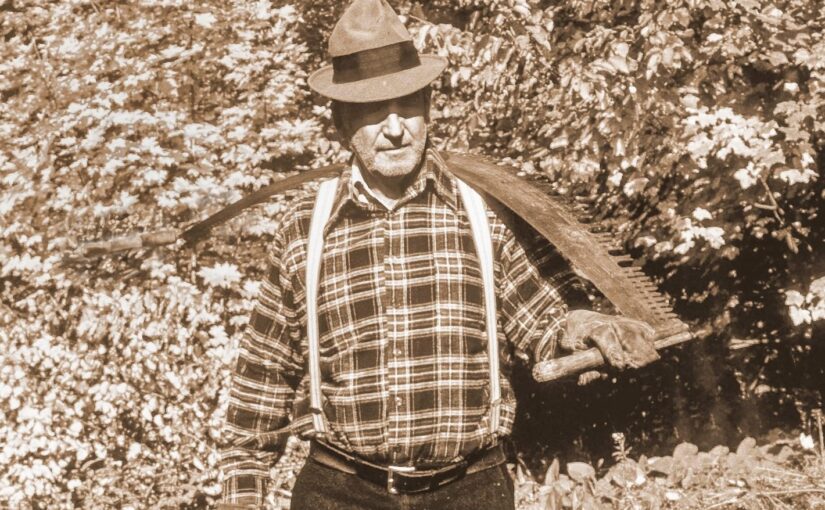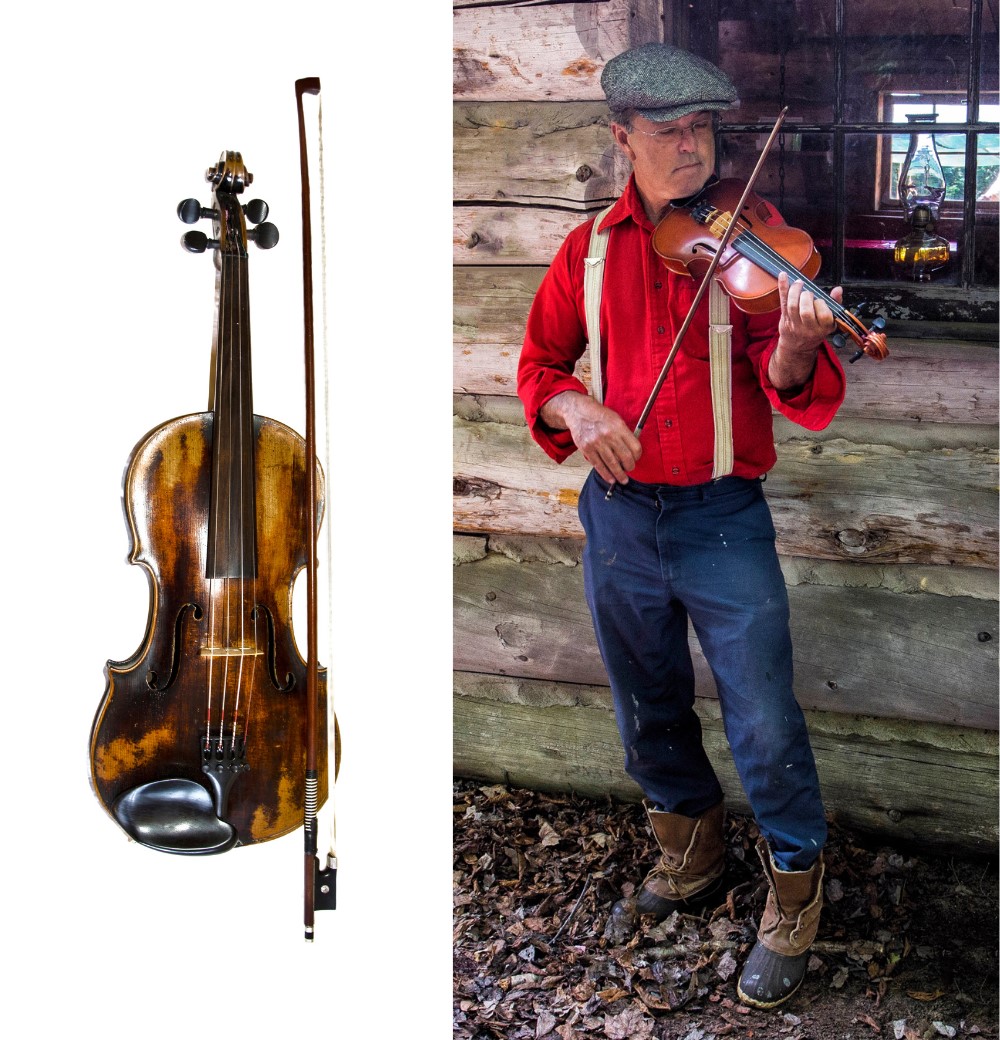Today’s post comes from Sonje Bols, a Discovery Program Coordinator with Ontario Parks’ Northeast Zone.
Have you ever wondered what it would have been like to be a lumberjack 100 years ago?
Was it a life full of adventure? Or was it a hard, grinding existence?
Did some lumberjacks really have superhuman strength? How much truth can be found in the legends and songs describing their feats, struggles, and triumphs?
Here are five objects from Marten River that illustrate what the life of a lumberjack was really like!
But first, a little context
In the early days of the country, much of Canada’s population was employed in the logging industry.
For Ontario, logging was (and still is in the north) a major component of the economy and defined the settlement patterns of many of its communities, especially in northern Ontario.
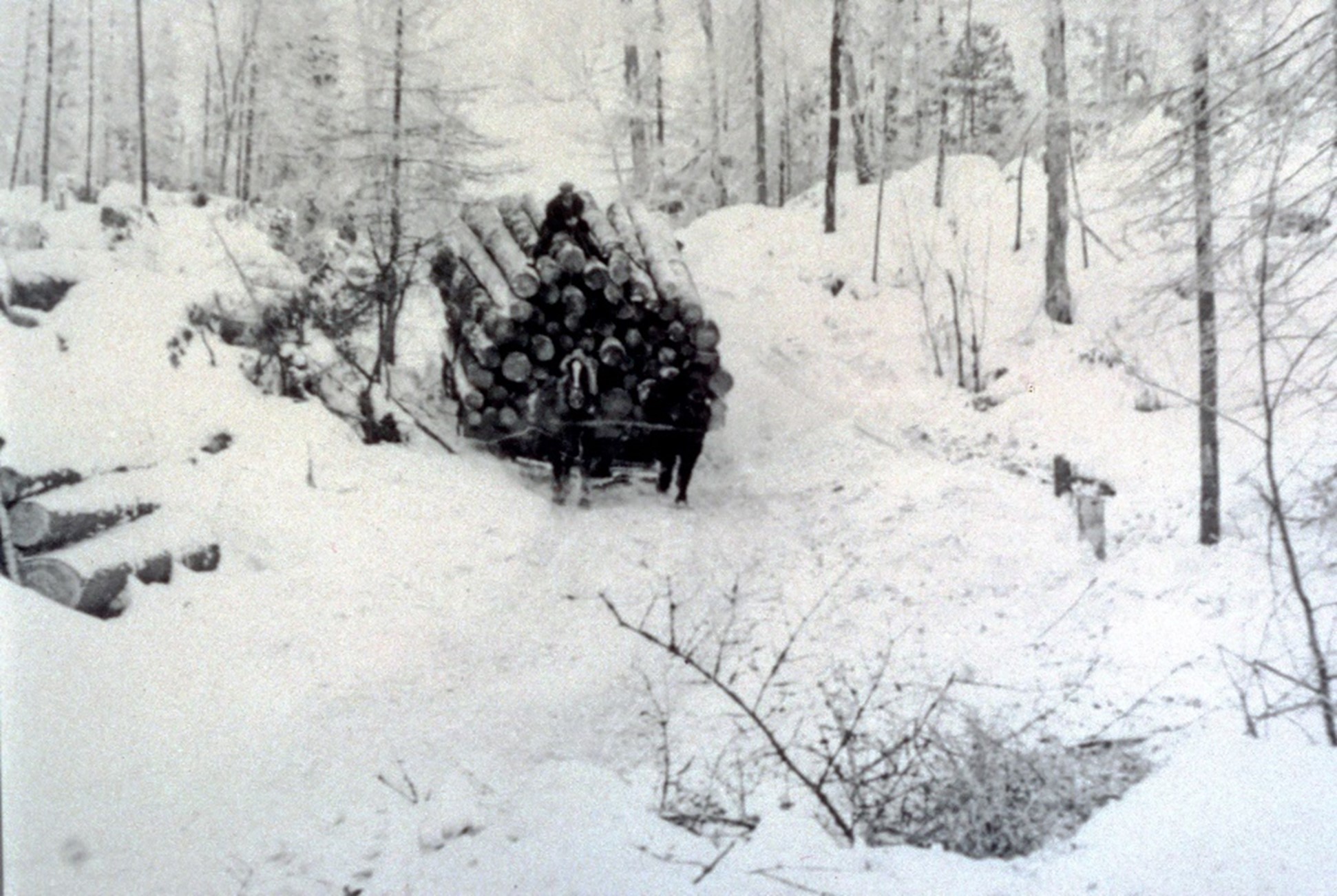
In the early part of the 20th century, the area around Marten River was a hotspot for the logging industry, with several logging camps located in what was then known as a “pinery” because of the abundance of White Pine.
Marten River Provincial Park is now home to a complete replica of an early 1900s logging camp called The Winter Camp, as well as a logging museum.
This museum holds an extensive collection of items that were used in the winter camps in those days.
Here’s a look at some of what the museum holds and what it tells us about the life of lumberjacks 100 years ago.
1. Time for breakfast!
A lumberjack’s day began with a good meal.
This heavy metal triangle (called the “gut iron”) hung outside the Cookery and was used to call the men to mealtimes.
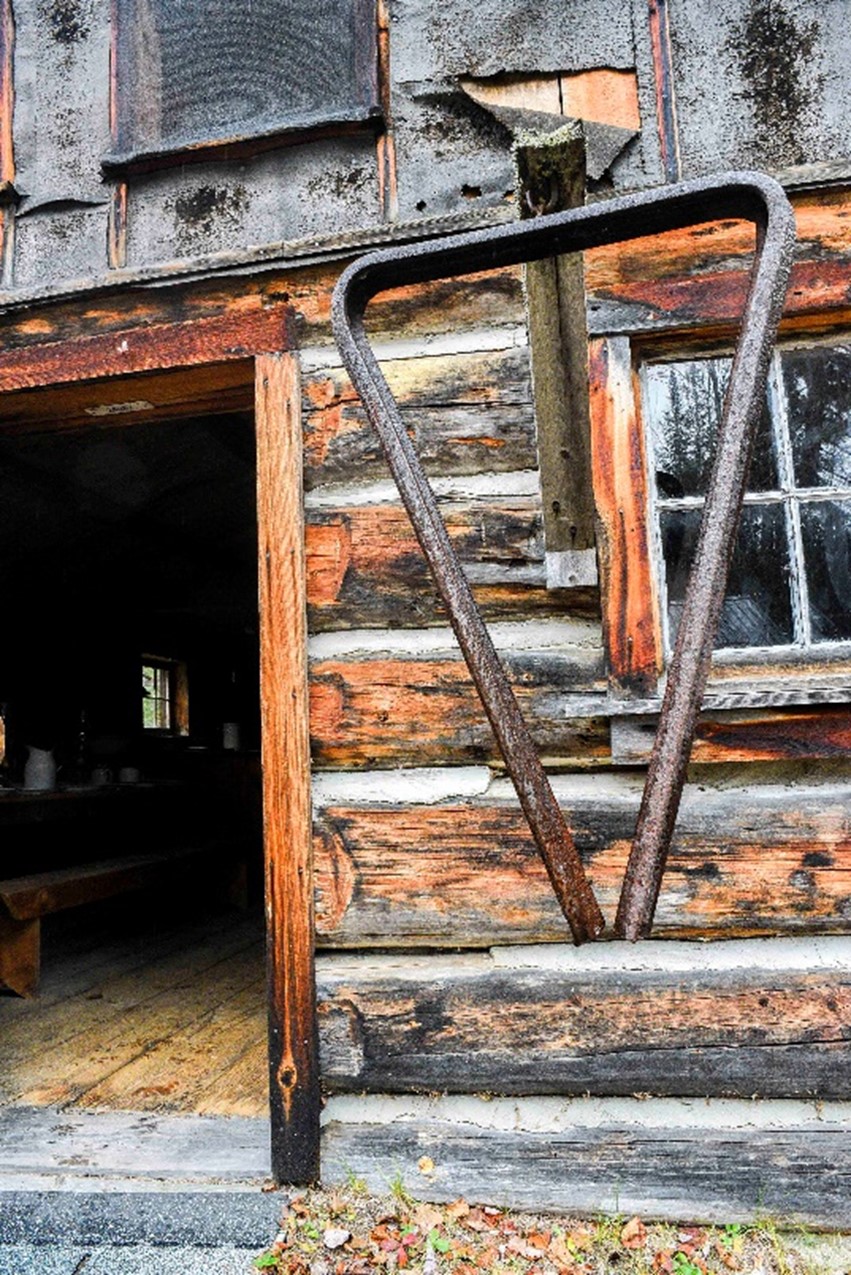
The cook (or a cook’s helper) would hit the inside of the triangle with a metal rod, and the loud clanging sound would let the whole camp know food was ready!
Breakfast was eaten quickly, long before sunrise so the lumberjacks could make the most of the limited winter daylight.
They would arrive to their cutting area just as it was light enough to work.
Lunch was packed for the bush, which they ate while sitting on felled logs, and supper was served after dark when the men eventually made their way back to camp.
These long days of hard work meant good, hearty meals were very important!
Lumberjacks consumed around 7,000 calories a day, however by the end of the season it was common for some of the bigger fellows to lose as much as 30-40 lbs from the steady hard work through the winter.
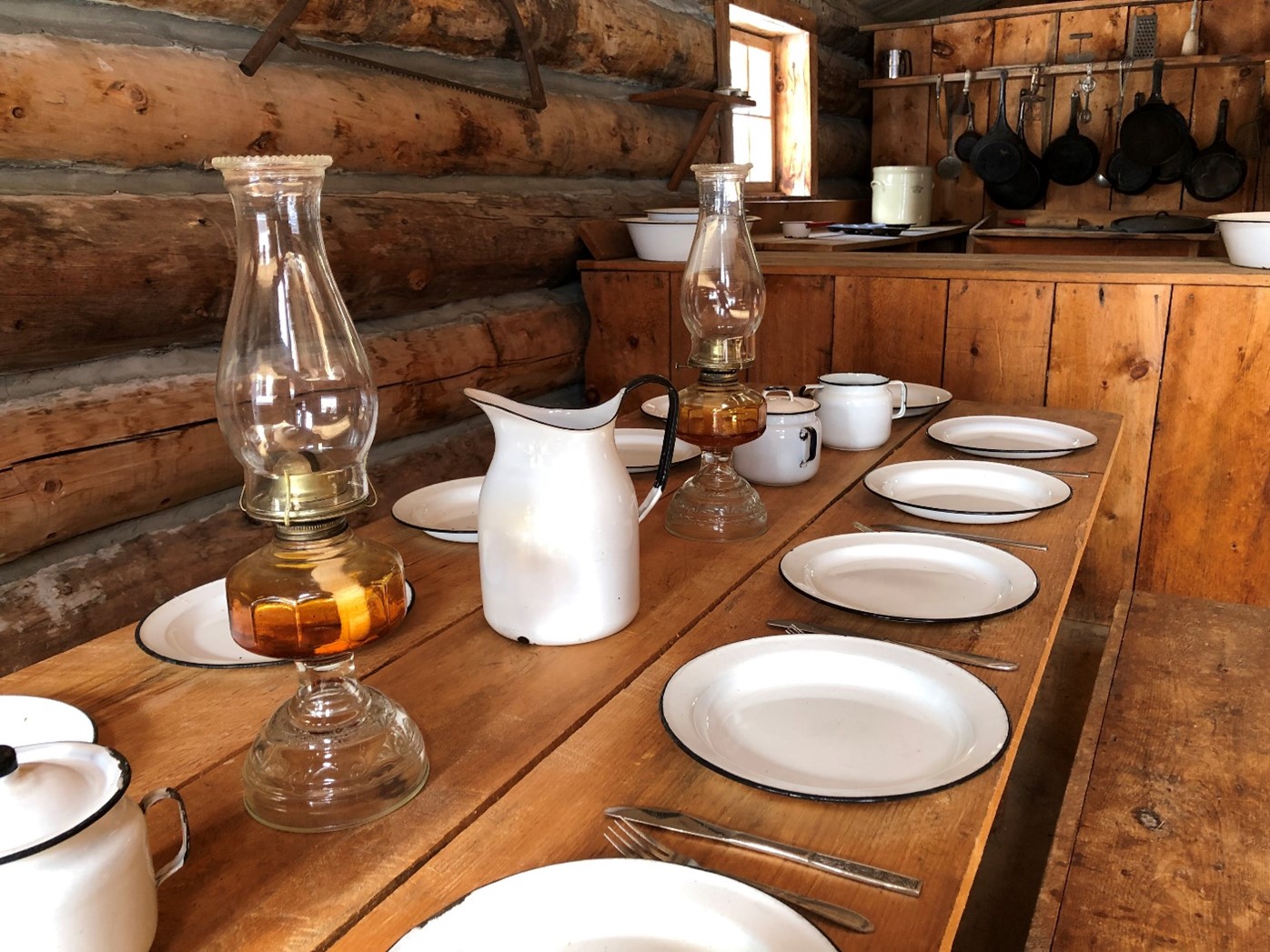
Typical menus included plenty of preserved meats and fruits, fresh bread, and lots of desserts.
Cooks were generally skilled and well-respected, and many enforced a strict no-talking rule at the dinner table to minimize distraction and keep mealtimes efficient.
Food was essential, and taken very seriously!
2. A lumberjack’s best friend
Beginning in the 1870s, the crosscut saw became a fixture in the lumber camps for felling trees and cutting logs, undoubtedly making the work much easier than using axes.
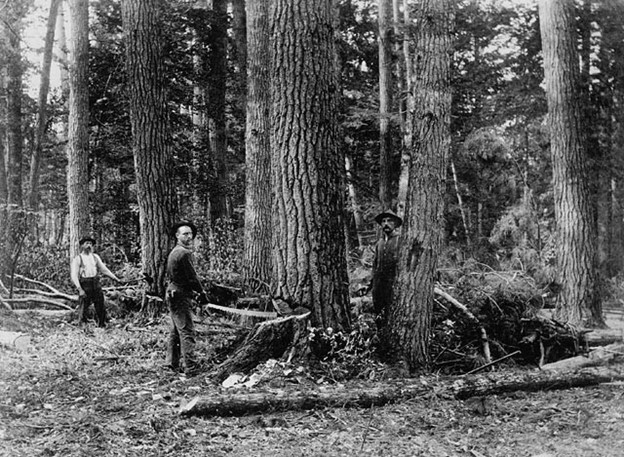
It doubled the productivity of the axe, so a team of three lumberjacks could cut around 100 logs per day instead of 50!
Lumberjacks who were good with the cross-cut saw became ‘sawyers’ and were paid more.

It took some time to perfect the two types of saw teeth — cutting teeth to saw into the tree, and raker teeth to remove the sawdust. The spacing and length of the teeth had to be just right to get the job done with ease.
3. The heavy lifters
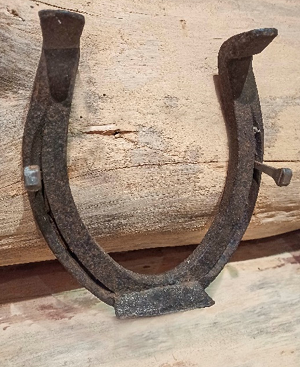
Horses, another good friend to the lumberjacks, were indispensable in the early logging days.
Unless you had superhuman strength, not much could be done around the camp without these “hayburners” as the men called them.
They worked closely with the lumberjacks to accomplish incredible tasks: from hauling 20-ton log sleighs to icing roads with the zamboni-like water tanker.
Many of these horses were brought to camp by their owners, who worked with them on their farms for the rest of the year. Teamsters (those who took care of and led the horses) generally preferred to work with the horses they knew.

Because most of the logging work was done in the winter, these horses had to navigate snowy and icy conditions. For that reason, they were “sharp-shod” with spiked horseshoes to grip the icy roads.
4. Firing up the forge
One of the defining characteristics of an early logging camp was its self-sufficiency. Camps were self-sufficient out of necessity. Most were very isolated from the nearest communities, by distance, a lack of roads, and the snows of winter.

Lumberjacks couldn’t simply walk to the nearest hardware store to buy replacement parts for equipment, tools, or a box of nails!
They needed someone on hand who could make all the repairs and tools they could possibly need. This person was the blacksmith.
Blacksmiths did everything from shoeing the horses to making and repairing chains, woodstoves, cant hooks, peaveys, and a range of other tools and equipment parts.
Anvils like the one above would have seen a lot of work in a logging season.
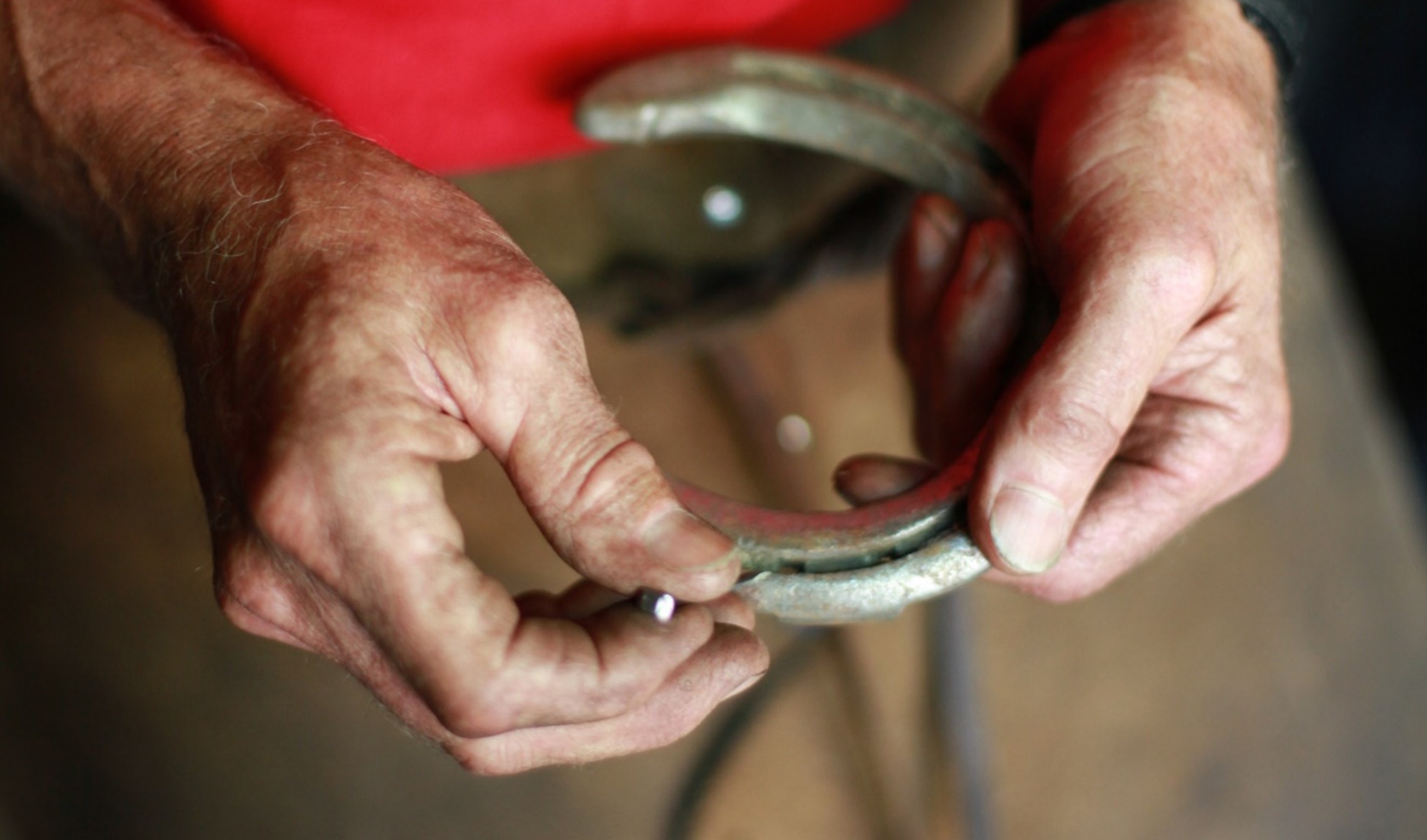
Once the area around the camp had been fully logged — a process that took only a few years — it was abandoned.
The blacksmith would take all the tools with him, and important pieces of metal, too. While they were heavy and an effort to transport, they were very valuable and worth the effort.
Almost everything else made from wood was left behind to rot!
5. Play us a tune!
Lumberjacks worked sun up to sundown, six days a week in all wintery weather conditions.
Sunday was their one day off, so Saturday night was a time for games, stories, and music.
Most camp bosses tried to make sure that at least one of their hires was also a musician to keep spirits up during the long winters.
Born out of these isolated camps, lumberjacks crafted tall stories and legends like those of “Big Joe Mufferaw” and “Peter Emberley” to commemorate the remarkable or tragic lives of their friends.
These songs and tales, born from the legends of the winter camps, are still told and sung today.
Tools of the trade
These five objects are some of the “tools of the trade” used by lumberjacks every day while they lived in the winter camps, and each one tells a bit of their story.
Using objects like a crosscut saw or a horseshoe to tell a story can help us understand the people who lived and worked in an era and industry that was a major part of Ontario’s development and history.
Their resourcefulness, efforts and struggles, and their stories continue to fascinate us today.
Visit the Winter Camp!
In the early 1970s, park staff began planning a logging museum that would replicate the type of seasonal lumber camp that lumberjacks would live in through the winter months as they cut the huge pines.
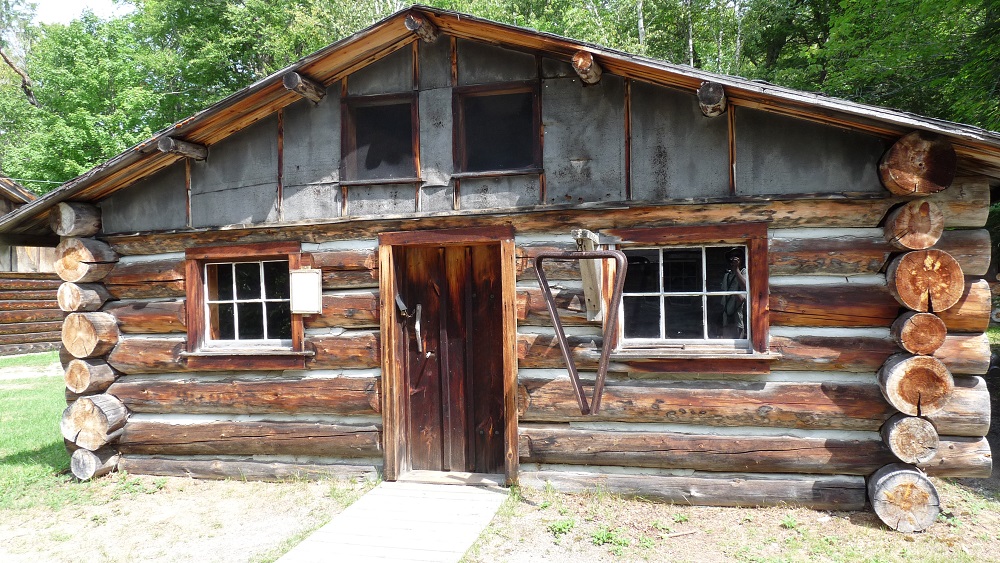
As a result, Marten River is now home to the Winter Camp, a re-creation of those temporary logging camps common in Temagami and the north during the horse-logging era of the late 1800s and early 1900s.
Visit Marten River for the day or come and camp along the shores of the Marten River, and explore the Winter Camp!
Looking for more lumberjack history? You’ve come to the right place! Check out the story of how the Winter Camp was built. Marten River hosts Lumberjack Days every summer. Check their events calendar to find out more about this year’s events!
